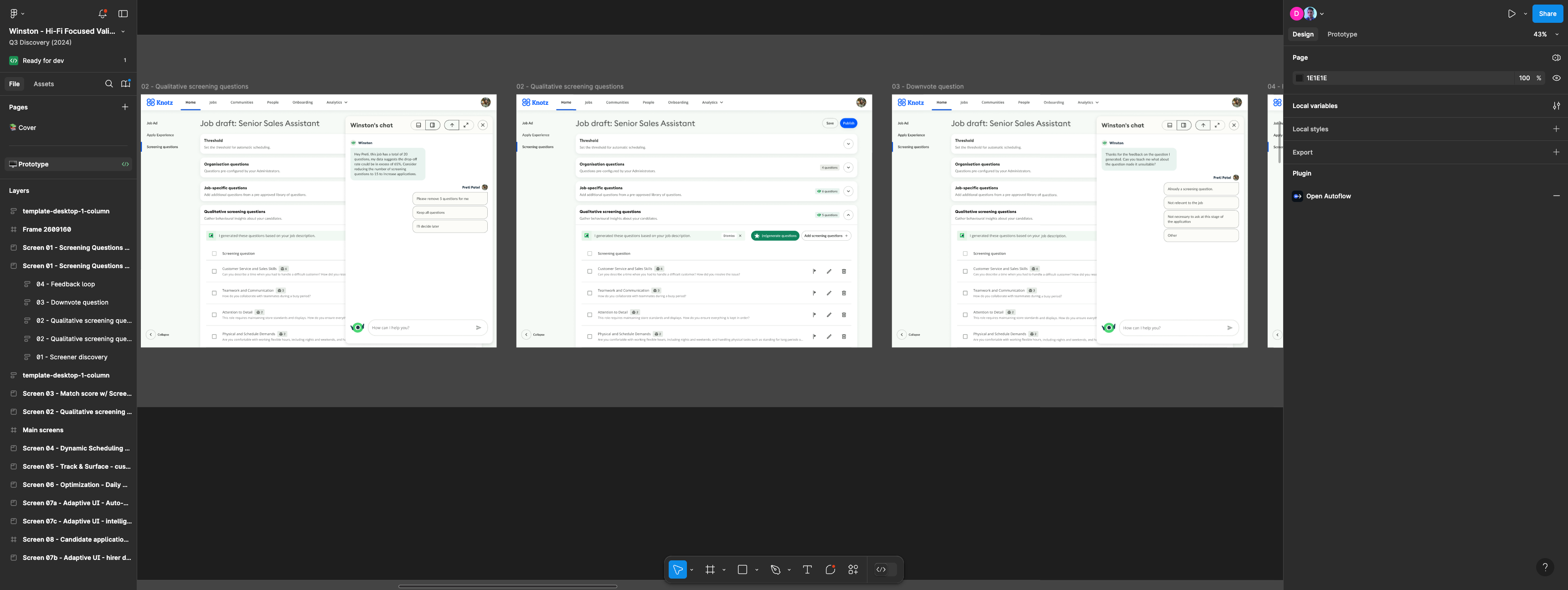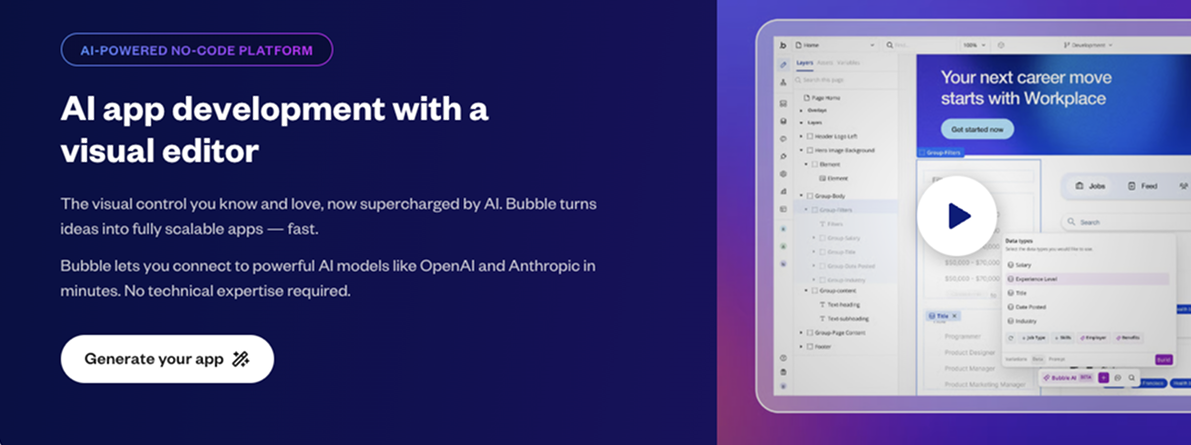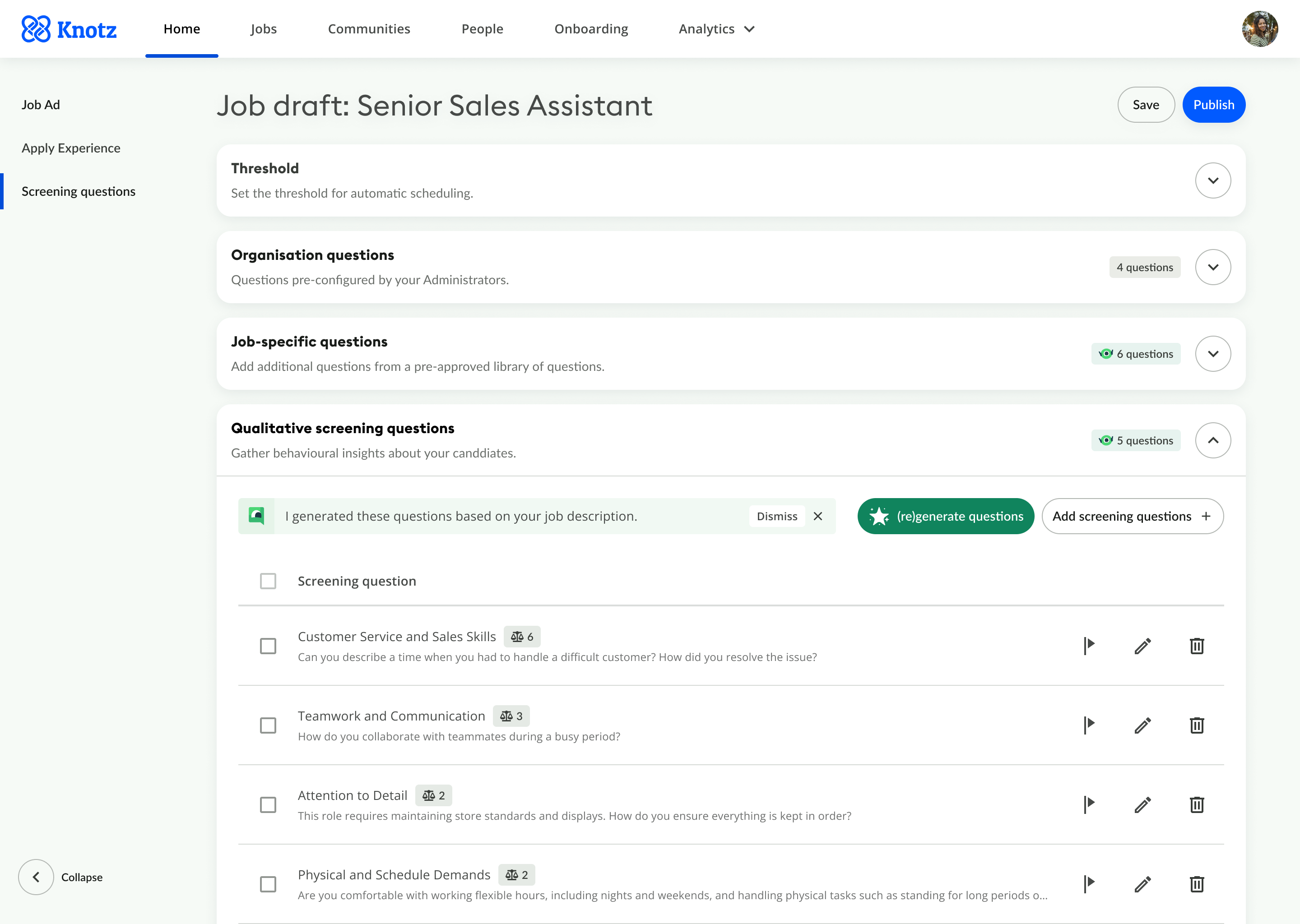How to create AI prototypes with Bubble.io
Figma won't validate
your AI solutions
Figma won't validate your AI solutions

Smart Recruiters is a Figma house. In 2024 they announced Winston their Gen-AI companion. (in)validating Winston with Figma became an overnight blocker
- Figma won't generate new content on each load
- Figma can't respond dynamically to data being input
Put down Maslow's instrument 🔨
& embrace new tools
- interaction is becoming more conversational
- content is different every time
- facts are not always facts
- things are slow (again)
- people think AI is a panacea (it's not)
- ethics tested to new extremes
Credit: Viral Laughs TV
Expectations vs reality
There was a temptation to treat AI app builders as a panacea to our problem.
AI Missing AI
Time to burst your Bubble.io

Bubble.io gives you the power to use AI in your designs while maintaining full agency of the decision making on how each constituent part of the design looks, feels, and works. It takes longer up front but delivers more believable experiences for better in(validation).
How to create AI prototypes with Bubble.io

Sign-up to Bubble.io
Should I pay?
With the AI product space accelerating so rapidly it is important to be adaptable and unencumbered.
- do not pay until you hit the point of needing the paywall features
- pay the premium of a pay-monthly subscription over a yearly one
- do your due compliance checks before you pay
Grab a coffee
Bubble.io feels like a familiar WYSIWYG editor; however, there are some new paradigms to learn, particularly around harnessing data. So grab a coffee and run through some tutorials to get up to speed. I recommend PlanetNoCode on YouTube.
Get an AI API account
Let's use OpenAI's LLM
You won't get away with not paying for an LLM API Key. Still, the various AI models available offer different pricing structures that make the cost affordable for low-scale applications, such as those typically seen in prototypes. Just remember that the same buyer strategy applies to the low-code tool vendor choice. Of course, you might be building with your own model, in which case the cost will potentially be negligible.
I've used OpenAI, and with some smart design choices, you can swap in and out different AI models pretty easily. If you're testing models, that can be a great advantage of prototyping with Bubble.io
Ask Bubble.io to mock an interface for your thing
Stop press
Stub your prototype with Gen-AI
What does the future have in store?
Today these AI vibe code apps do a pretty decent job of making vanilla apps with limited specific requirements. That limits their use for customer validation, but for sure they'll get better.
- more agency over the app without the need to code
- integrations into systems like design tokens that will help create more desirable outputs
- faster generation times, getting closer to the Doherty threshold
- improves its capability to learn and understand intent to better match our mind's eye